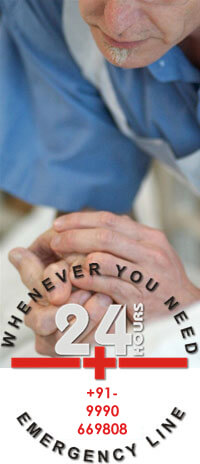Infant CPR Training
According to generally accepted guidelines, Infant CPR is administered to any victim under the age of 12 months.
Infants, just as children, have a much better chance of survival if CPR is performed immediately.
Cardiopulmonary resuscitation is a combination of chest pumping (compressions) which moves blood from the heart to the body, and mouth-to-mouth breathing which sends oxygen to the lungs.
Before Giving CPR To Infant
- Check the scene and the Infant. Make sure the scene is safe, For infants, flick the bottom of the foot to elicit a response.
- If the infant does respond, call 112 to report any life-threatening conditions and obtain consent to give care. Check the child from head to toe and ask questions to find out what happened.
- Open the airway of infant. With the child lying on his or her back, tilt the head back slightly and lift the chin.
- Check for breathing of Infant. Listen carefully, for no more than 10 seconds, for sounds of breathing.
- Infants typically have periodic breathing, so changes in breathing pattern are normal.
- Use your mouth to make a complete seal over the infant's mouth and nose, then blow in for one second to make the chest clearly rise. Now, deliver two rescue breaths.
- Begin CPR. If the child or baby is unresponsive to the rescue breaths, begin CPR.
Performing CPR on Infant
- Kneel beside the Infants.
- For infants, use 2 fingers to deliver 30 quick compressions that are each about 1.5 inches deep.
- Give 2 rescue breaths (see instructions above).
- Keep going. Continue the these Infant CPR steps until you see obvious signs of life, like breathing, or until an AED is ready to use, another trained responder or EMS professional is available to take over, you're too exhausted to continue, or the scene becomes unsafe.
Infant CPR (Cardiopulmonary Resuscitation) is a life-saving technique that can help revive an infant who has stopped breathing or whose heart has stopped. It's important to note that CPR should only be performed by someone who has been trained and certified in CPR techniques.
Here are the basic steps for infant CPR:
- Check for responsiveness: Tap the infant's shoulder and shout their name to see if they respond. If they don't respond, call for emergency medical services.
- Open airway: Tilt the infant's head back and lift their chin up to open their airway.
- Check for breathing: Place your cheek close to the infant's nose and mouth to see if you can feel any breath. Look for chest movement as well.
- Begin chest compressions: If the infant is not breathing or has no pulse, start chest compressions. Place two fingers on the infant's breastbone just below the nipple line and push down about 1.5 inches with each compression. Perform 30 compressions at a rate of 100-120 per minute.
- Give rescue breaths: After 30 compressions, give two gentle rescue breaths by placing your mouth over the infant's nose and mouth and blowing until you see their chest rise.
- Repeat compressions and rescue breaths: Continue performing cycles of 30 compressions and two rescue breaths until emergency medical services arrive or the infant starts breathing on their own.
Remember, CPR is a skill that requires practice to master. It's recommended that anyone who is responsible for an infant's care takes a CPR training course to learn the proper techniques and gain the confidence needed to act quickly and effectively in an emergency situation.
Check the infant for responsiveness by patting his feet and gently tapping his chest or shoulders. If he does not react (stirring, crying, etc.), immediately check his airway![]()


































